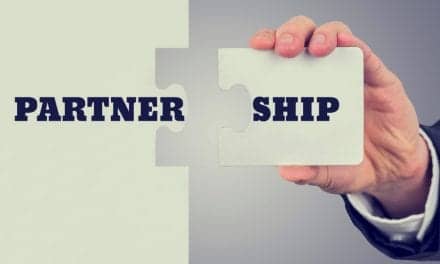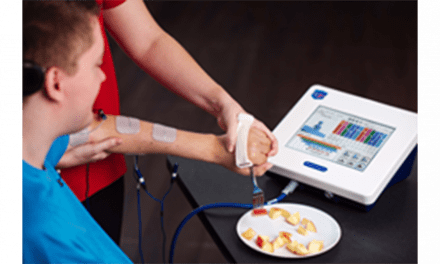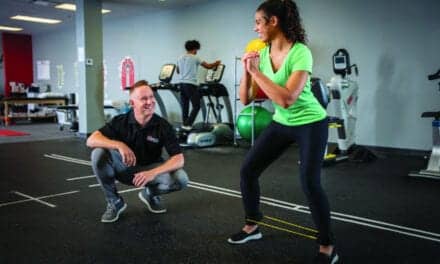In the treatment of walking impairments, a personalized protocol and technology can help restore mobility in patients affected by neurological injuries.
Assessing a patient’s gait is an important part of patient evaluation, as an abnormal gait can be a key indicator that one, or several, things may be wrong. Neil B. Alexander, a University of Michigan geriatrician, says, “Of all the clinical measures we have that predict mortality and a person’s likelihood of being institutionalized, gait disorders are one of the best. A person’s gait is an excellent indicator of how impaired that person is.” In addition, if left untreated, existing gait disorders can lead to the development of new ones, such as increased risk of fall.
The Sheerr Gait and Motion Analysis Lab at MossRehab in Elkins Park, Pa, and the Neuro Recovery Center of Brooks Rehabilitation in Jacksonville, Fla, are two facilities dedicated to treating patients affected by neurological or disabling injuries, and providing rehabilitation to restore mobility, strength, and function. This article examines the primary goals of each facility, individual treatment protocols, and the technology utilized in the measurement, assessment, and rehabilitation process.
Primary Goals for Therapy
The Sheerr Gait and Motion Analysis Lab at MossRehab strives to help physicians identify the causes of ambulation problems to help make recommendations for treatment interventions. Maria Lucas, PT, DPT, says the lab, which treats both pediatric and adult patients, helps to identify the causes of walking and functional mobility disorders. “The primary purpose is the examination and treatment of persons with gait dysfunction due to a variety of conditions, including stroke, brain injury, degenerative neurologic disorders, cerebral palsy, amputation, and orthopedic-related problems,” Lucas says.
The Sheerr lab also evaluates patients who use orthotic and prosthetic devices. Lucas explains that the Sheerr team aims to assist these patients by “optimizing the alignment of those devices and patients with orthopedic injuries that affect their ability to walk.” Essentially, the lab aims to treat patients who have difficulty walking as a result of injury or disease.
The Brooks Rehabilitation Neuro Recovery Center provides care for neurological patients and aims to provide a seamless transition between stages of recovery. The facility offers treatment for stroke, brain injury, spinal cord injury, and vestibular disorders, as well as multiple sclerosis, cerebral palsy, and Parkinson’s disease. The Neuro Recovery Center, which has trained neurological experts, focuses on research-based treatment approaches and provides continued recovery options following traditional rehabilitation. Carol-Ann Nelson, PT, DPT, explains, “While the highest potential for recovery is during the first 1 to 2 years after an injury or illness, most patients usually receive only 5 to 6 months of recovery activities. The Brooks Rehabilitation Neuro Recovery Center allows patients to continue recovery between and after traditional therapies to maximize their functional potential.”
Technology for Rehabilitation
For measurement and assessment of gait and balance, as well as the rehabilitation of patients with walking impairments, several types of technology are available, ranging from force plates to body weight support systems, and from rehabilitation treadmills to motion and video capture. Each type of equipment offers specific benefits and allows the clinician to develop an intervention, view a patient’s progress, and provide rehabilitation for patients affected by neurological injuries. In regards to the benefits of these various types of equipment, Lucas says the technology offers a “level of detailed analysis [that] allows the clinician to have a very precise approach to intervention and focus on the main problems associated with the walking. The measurement also allows you to see the effect of the intervention to implement and to evaluate if it is beneficial.”
Gait Analysis and Pressure Mapping Devices
A number of technologies are available to collect and analyze temporal, spatial, and pressure data. The Sheerr Gait and Motion Analysis Lab utilizes a gait mat, force plates, force vector analysis, and plantar pressure measurement when treating patients with walking-related impairments. For plantar pressure measurement, the clinicians at Sheerr utilize the F-Scan System from Boston-based Tekscan, a plantar pressure map system that is “particularly helpful in evaluating shoes and orthotics when you are trying to reduce pressure on the foot,” according to Lucas. She adds, “People with foot injury, deformity and, particularly, diabetes who have a risk for skin breakdown can benefit from F-scan pressure mapping.”
ProtoKinetics, Havertown, Pa, also provides specialized technology for assessing gait and balance, such as the Zeno Walkway, which contains a 16-level pressure-sensing pad and circuitry, and detects and collects pressure data during static and dynamic balance and gait assessment. The St Paul, Minn-based company, novel electronics, also offers products for measurement and analysis, such as the emed system, a pedography measurement platform that helps collect and display plantar measurements.
An additional type of technology for measuring temporal and spatial parameters of gait, such as gait speed and stride length, is a gait mat. The PTs at Sheerr utilize a gait mat developed by MossRehab as part of the MossRehab Krusen Rehabilitation Engineering Center. Lucas says a gait mat provide a measure of progress over time, current status, or the effect of an intervention. Also, Lucas adds, among individuals affected by progressive diseases, it can measure status over time. The Mobility Lab by APDM Inc, Portland, Ore, and the GAITRite from CIR Systems, Sparta, NJ, are other types of technology that can be used for gait analysis. The Mobility Lab uses sensors attached to the patient to collect, analyze, and store outcome measures. The GAITRite is a portable gait analysis system that is designed to help a clinician gather and analyze data as well as generate reports.
Force plates are another tool used for gait analysis as well as research and clinical studies. AMTI, based in Watertown, Mass, manufactures force plate systems, as well as zFlo Motion Analysis Systems, which offers a gait analysis system that features live force plate data on its Force Vector Analysis with TEMPLO. The Sheerr Gait and Motion Analysis Lab uses force plates from the Columbus, Ohio-headquartered Bertec, another provider of measurement and assessment products. In regards to the benefits of force plate use, Lucas explains, “When combined with kinematic data that is collected with the motion capture, you can calculate joint reaction, moments and forces that act on the body and are produced by the body. We can compare them from one leg to the other and also to normal data from the population.”
For rehabilitation activities associated with stroke and neurological patients a properly outfitted treadmill can offer good utility for patient care. One example is the MT200 Rehabilitation Treadmill from Jonesboro, Ark-based Spirit Medical Systems Group. This treadmill features bidirectional belt speeds for retro-walking, a bilateral symmetry program, and low patient step-up. The MT200 is built for use with gait training patients as well as orthopedic and sports-focused patient populations.
Body Weight Support Systems
Body weight support systems may be utilized to improve gait and can provide an interactive approach to gait training, as they can be used to influence stability and balance by altering the levels of body weight while stepping. The Neuro Recovery Center uses the ZeroG from Aretech LLC, Ashburn, Va. The system is engineered to provide patients either static or dynamic body weight support as they practice walking, balance tasks, sit-to-stand maneuvers, and stair climbing. Robert McIver, PT, DPT, NCS, center manager of the Neuro Recovery Center, says, “The versatility of the technology allows us to mimic most any situation a patient may encounter in their home or community environment. It is very user-friendly and provides a safe environment for both the patient and the clinician.” In addition, McIver states, “By adding the passive systems, it also allows our clientele to work on pre-gait and gait activities as part of a circuit program prior to their scheduled appointments to further the gains made between sessions.”
The Therastride from Innoventor, headquartered in St Louis, is also used by the Neuro Recovery Center. Innoventor is a computer-modulated body weight support system that features a dynamic computer-assist feedback mechanism. Nelson says, “Walking speed, body weight support, stepping time, and manual assistance gradually progress as the patient improves.” Nelson adds, “Each treadmill session is followed by a land session to incorporate the skills the patient just learned in a more normal walking environment.”
Other body weight support systems on the market include the Vector Gait & Safety System from Bioness, Valencia, Calif, as well as the SafeGait 360-degrees balance and mobility trainer from Gorbel Medical, Fishers, NY.
Using Functional Electrical Stimulation
Functional electrical stimulation (FES) is a technique that applies small electrical pulses to muscles to restore or improve function and improve mobility. At the Neuro Recovery Center, the PTs use the RT300 FES Cycle and the RT600 FES Elliptical from Restorative Therapies, based in Baltimore, to administer FES to patients. The RT300 Leg System stimulates up to 16 muscle groups in the user’s legs and trunk, while the RT300 Leg and Arm System stimulates one or both legs or arms while the user cycles from his or her wheelchair. The RT600 is designed to combine dynamic weight bearing with FES as an assist, and can stimulate up to any 16 muscle groups in one or both of the legs and trunk.
McIver explains that the products from Restorative Therapies were selected for their versatility. He states, “The ability to create programs that are patient specific with regards to muscle groups, speed, intensity and that are geared toward function allows us to create multiple programs for each individual. This gives variety to their workouts and benefits their overall wellness.” McIver adds, “From the clinical side, they are very easy to use and give options for use for beginner-level clinicians, but also have the flexibility in their software to allow advanced users to get responses they need and want during treatments.
The clinicians at the Neuro Recovery Center also use the NESS H200 Hand Rehabilitation System and the L300 Foot Drop System, manufactured by Bioness, Valencia, Calif. The H200 Hand Rehabilitation System is a lightweight orthosis with a wireless handheld control unit that stimulates the proper nerves and muscles of the hand and forearm, and also helps to re-educate weak or paralyzed muscles. The L300 Foot Drop System is a medical device that delivers low-level electrical stimulation to activate nerves and muscles that lift the foot to improve mobility.
Motion and Video Capture
For gait and motion analytics, the use of cameras, recorders, and motion analysis software can provide clinicians visual feedback during treatment sessions. These technologies can enable the clinician and patient to see immediately and accurately what the body is doing and how it is performing. In addition, recording and motion analysis software allows for the simple exchange of information and can aid the clinician in creating a customized rehabilitation program for patients. The rehabilitation professionals at the Sheerr Gait and Motion Analysis Lab utilize capture technology from the United Kingdom-based Coda Motion and equipment, including cameras, and a recorder, from Sony for slow-motion video capture.
To get a detailed measurement of movement during gait, the lab also uses an Active Marker system to precisely measure joint angles, moments, and powers at joints. According to Lucas, the slow-motion video capture allows therapists to obtain a frame-by-frame analysis of movement during walking or other activities. Lucas states, “Combined with the force vector below, it gives very precise information about the position of the ground reaction force and the effect that is having on the joints of the limb during standing and walking.”
Analysis Tools
The market offers a variety of tools for assessment of real-time force vectors in patients affected by gait disorders. The Sheerr Gait and Motion Analysis Lab uses a device developed by MossRehab for force vector analysis, which was also developed as part of the MossRehab Krusen Rehabilitation Engineering Center. Lucas says Sheerr uses it to measure forces that are applied during walking at multiple joints and the magnitude of forces. Lucas says the facility finds this equipment essential for orthotic and prosthetic alignment and analysis.
For clinical gait and motion analysis, EMG analysis can provide a clinician specific measurements for gait studies, such as the presence or absence of the particular muscle’s activity during a portion of a cycle, which can lead to an understanding as to whether a particular muscle is firing at the appropriate time in the gait sequence.
According to Lucas, EMG analysis enables a clinician to “measure the muscle activity of up to 32 muscles during walking so that you can analyze at each moment of the gait cycle which muscles are firing.”
Emerging Technology for Treatment of Mobility Impairments
New technologies for gait assessment are consistently emerging and have provided new avenues for precisely measuring gait characteristics in the home and clinic. Lucas says, “There is such an explosion of technology, and the impact is changing all the time. While I am sure that technology will have a great role in allowing patients to compensate for lost mobility or impairments, there is also a lot of potential for technology to improve and enhance our outcomes.” According to Nelson, the clinicians at Brooks research technology as it emerges and decide among their team whether it will be beneficial and financially feasible to meet the facility’s needs.
Though therapists can be challenged by internal budgets and reimbursement rates, the marketplace offers a growing selection of products in a range of price points that can help deliver highly effective care to patients affected by a mobility impairment. With these options close at hand, therapists can make rehab program highly personalized to help patients reach their optimum level of function. PTP
Cassandra Perez is a contributing writer for Physical Therapy Products. For more information, contact [email protected].
References
1. Benaim C, Pérennou DA, Villy J, Rousseaux M, Pelissier JY. Validation of a standardized assessment of postural control in stroke patients: the Postural Assessment Scale for Stroke Patients (PASS). Stroke. 1999;30(9):1862-1868.
2. Choosing a force plate. Retrieved from http://www.amti.biz/fps-guide.aspx. Accessed October 9, 2014.
3. Functional electrical stimulation. Retrieved from http://www.christopherreeve.org/site/c.mtKZKgMWKwG/b.4453425/k.27A5/Functional_Electrical_Stimulation.htm. Accessed October 9, 2014.
4. Iqbal Y. How to detect and treat gait disorders. Observer. November 2005. Print.
5. Kyvelidou A, Kurz MJ, Ehlers JL, Stergiou N. Aging and partial body weight support affects gait variability. J NeuroEngin Rehab. 2008;5:22.
6. Measurement and Assessment Roundtable. May 5, 2011. Retrieved from https://ptproductsonline.com. Accessed October 9, 2014.
7. Rechtien JJ, Gelblum JB, Haig AJ, Gitter AJ. Guidelines in electrodiagnostic medicine. Technology review: dynamic electromyography in gait and motion analysis. Muscle Nerve Suppl. 1999; 8:S233-238.
8. Schwenk M, Howe C, Saleh A, et al. Frailty and technology: a systematic review of gait analysis in those with frailty. Gerontology. 2014;60(1):79-89.





